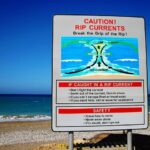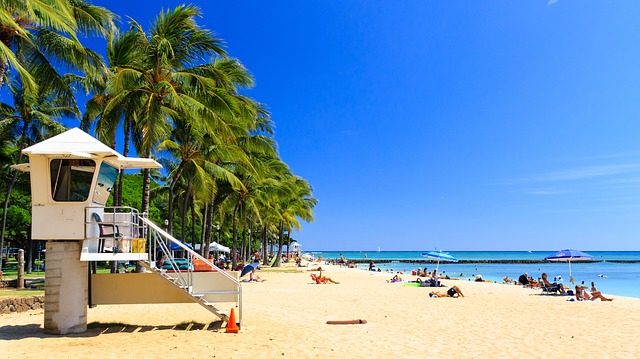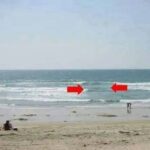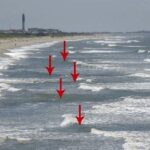Rip Currents, often mistakenly called “rip tides” or “Undertow” are channelled currents that go seaward taking with them floating objects and bathers/swimmers. It takes a while for most people to realize they have been caught in a rip current and by the time they do they are taken seaward. It is then that they start trying to swim back to shore (against the current) getting tired and panicking until they eventually drown. An average swimmer can escape from a rip current by swimming parallel to the beach until he/she is released from the current effect and then return to shore by swimming diagonally back to the beach.

Rip currents often can be seen parallel to structures such as piers, breakwaters, jetties, groins, rocky formations, etc. Water in the rip current channel usually looks different from the water on its side(s). This is due to the change of the bottom depth.
Indian Space Research Organisation(ISRO) with the help of Drishti Lifesaving, Goa are studying Rip Currents along the western coast of Indian and Goa. So far Calangute, Anjuna, Baga and Colva have been identified as rip current beaches.
Most rescues along Goan beaches are due to Rip and underwater currents
“Rip currents and underwater currents are two of the significant causes leading to rescue operations along Goa’s coast as per incident reports maintained by Drishti Lifesaving. In January itself our lifeguards rescued 30 swimmers from 23 related incidents reported along the beach stretches in the no-swim zones,” said director of Drishti Ankit Somani said. (As per a ToI report)
A personal near-death drowning experience; Caught in a Rip Tide
‘A family of 8 rescued from drowning at Morjim Beach by Drishti Lifeguards services’. This message flashed on all newspapers across Goa. People received the message on their mobile phones via SMS as well.
Around four years back, on a sunny afternoon in summer, ten of us, 6 children and 5 adults, were out picnicking on Morjim beach, North Goa. A beautiful delta beach where the river Chapora empties itself into the sea. The Morjim beach being a famous nesting site for Olive Ridley turtles. The speciality about Morjim beach is that the water is shallow up to a few meters into the sea. Thus, safe for children to wade and the more preferred beach for us.
That eventful afternoon, my nieces wanted to go into the water a second time. The tide had fully ebbed by then. That meant swimming in the deep a few meters away from the shoreline. Unaware of the lurking danger, since the children were eager, I led the group. We were 3 adults and five children. My brother was unable to manage his daughter so they forced their way out. Before we knew it we were buffeting the current, in deep sea, with no sand beneath our feet. We were unable to feel the sand or swim an inch forward towards the shore. We had been carried with the water body. People on the beach looked like tiny ants. Beginning to waive frantically as we panicked. Nobody realised we were waiving for help. It took some seconds and a lot of effort for the Lifeguards to be alerted as it was their lunch time. By then, the children began to tremble with fear. Keeping them afloat weighed down on us. (I had no knowledge about swimming parallel to the shore to get out of a current or rip tide at the time). Quickly the lifeguards assembled on the beach. Rescue operations seemed a bit tricky to them as we got scattered. One Drishti Lifeguard quickly approached us on a water scooter with a dingy. That was not much help though. Then two other lifeguards managed to throw in two floats and drag us back to shore.
All of us were good swimmers and God was on our side, so we were able to stay afloat. It later dawned on us that the red flag put up on the beach where we were swimming indicated danger.




